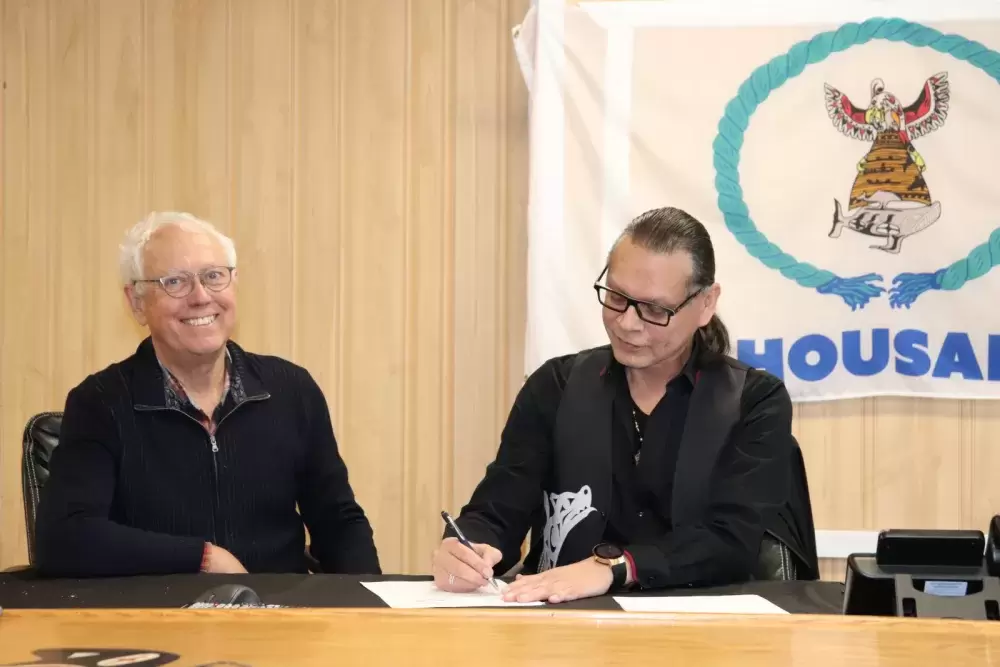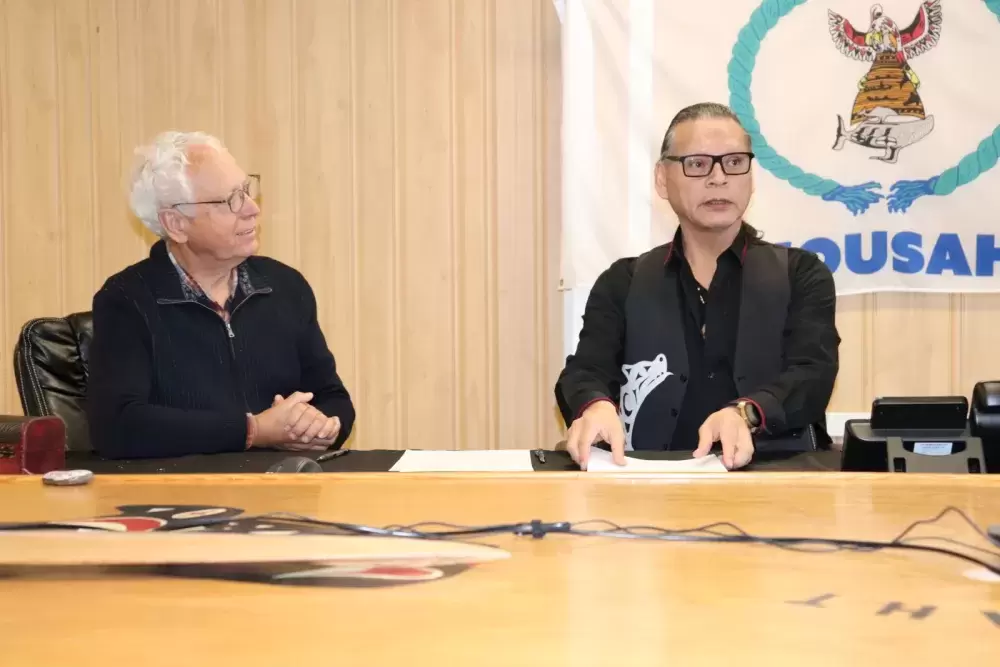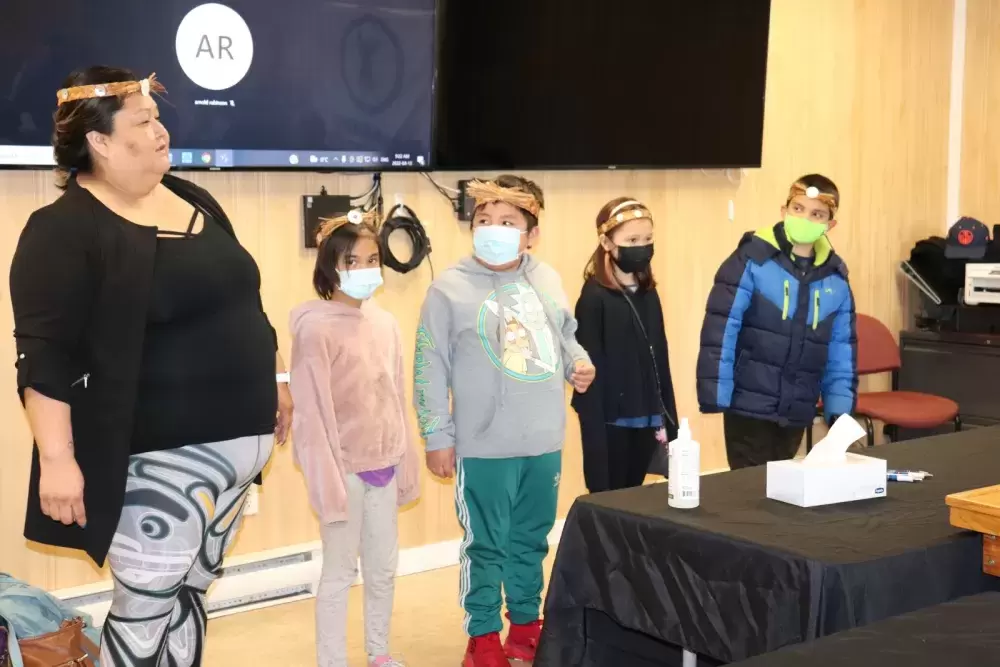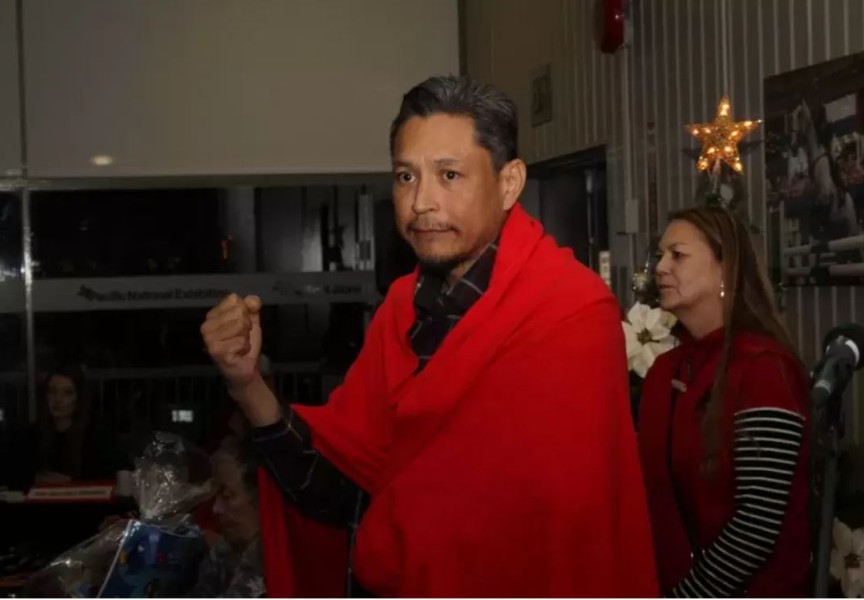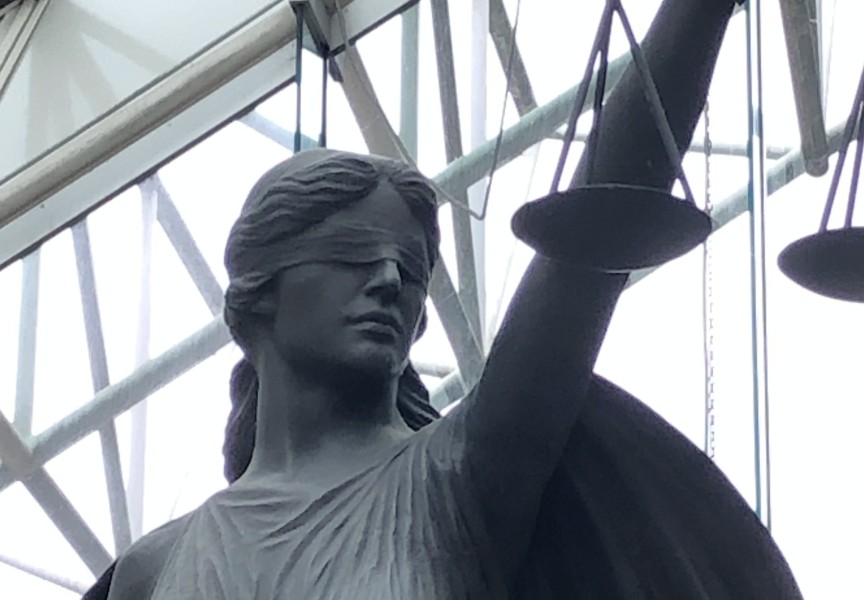The provincial Minister of Indigenous Relations and Reconciliation, Murray Rankin, arrived in Ahousaht April 13 to sign an historic agreement with Ahousaht Ha’wiih and elected council. The agreement, called AHP-CII-UK, is an MOU (memorandum of understanding) that took about 18 months of negotiations between the provincial and Ahousaht governments to craft.
AHP-CII-UK, which translates to English as "going the right way, together". The canoe is an important symbol to the Ahousaht First Nation, and the MOU envisions building a strong canoe so the province and the Ahousaht people can paddle together in the same direction, said a ministry news release.
In his opening remarks, Elected Chief Greg Louie said it was at a meeting Ahousaht had with John Horgan about three to four years ago when they told the premier that they wanted to start reconciliation negotiations with the province.
By moving forward with reconciliation, it is hoped by both sides that a new relationship between the governments will help advance long-lasting reconciliation through respect, co-operation, partnership and a recognition of Ahousaht First Nation rights.
According to Louie, Premier Horgan immediately said yes to the idea of reconciliation negotiations.
“He directed then minister of Aboriginal Affairs and Reconciliation Scott Fraser to start it,” Louie recalled.
Luigi Sposato, executive director of Land Use Planning with the provincial government, was appointed lead negotiator on behalf of the province.
Ahousaht appointed lead negotiators Greg Louie and Tyson Atleo and named several Ahousaht Joint Committee members, made up of elected councilors and elders, for consultation during the talks. Meetings were conducted via Zoom due to public health orders resulting from the pandemic.
Over time, the teams came up with six priority topics, that they refer to as paddles, to concentrate on as the parties move toward reconciliation. Louie said they chose paddles as an analogy to represent the work that needs to be done to reach a destination.
"This AHP-CII-UK agreement is the start of an acknowledgment of who the Ahousaht people are, and have been since time immemorial," said Chief Louie in a statement provided by the Ministry of Indigenous Relations and Reconciliation. "I am happy the province is learning about the Ahousaht way in our hahouthee, and I believe this agreement is a steppingstone to a strong relationship and a better future for everyone."
The MOU was signed in July 2021, but the parties could not get together until April 13 to celebrate the occasion. Minister Rankin was thanked by the people of Ahousaht for demonstrating his willingness to get to know the community by agreeing to spend the night and tour the village.
Chief Louie talked about the endless needs assessment surveys sent by government in the past that didn’t go anywhere. He called them ineffectual. He recalled a time when a group of senators flew into Ahousaht then left after an hour.
“What a waste of resources,” said Louie, adding that they probably could have bought a house with the money spent on that trip.
Minister Rankin thanked Ahousaht, adding that the province is committed to this reconciliation journey.
The MOU will guide next steps to reconciliation. Ahousaht will meet with representatives of the provincial government on a regular basis to build on the six paddles: language and culture; community infrastructure and housing; health and social development; natural resource management; economic development; and governance, recognition, and accountability.
Rankin said that this MOU is different in that it is an action plan containing 89 tasks that both sides have agreed to work on.
“The law requires us to deliver an annual report to show which of the 89 tasks have been done over a period of five years – so we are accountable to you,” he stated.
"The AHP-CII-UK memorandum of understanding represents the important next steps in the working relationship between Ahousaht First Nation and B.C.," Rankin said. "It will guide our discussions on vitally important topics in a way that respects and recognizes the many essential aspects of Ahousaht's vision for their community. Together, we are building a robust canoe that will carry us toward a prosperous future."
“Under the MOU, Ahousaht First Nation and the province will develop a way forward that recognizes Ahousaht's culture, history, title and rights. Ahousaht has a fundamental and interconnected relationship to the ‘hahouthee’ - the Nation's territory,” said the ministry in a statement.
They went on to say that the agreement will begin to address the profound impact of colonization on their hahouthee by working together to improve socio-economic opportunities for the Ahousaht community, strengthening the First Nation’s governance, as well as building B.C. and Ahousaht's government-to-government relationship.
Both sides agreed to move forward with respect.
“When you work together, mountains can be moved,” said Louie. “We put the framework together, now it’s time to put meat on the bones.”
There are more than 2,100 registered Ahousaht First Nation members. About half of them live on Flores Island, at Maaqtusiis.
Link to the agreement: https://www2.gov.bc.ca/gov/content/environment/natural-resource-stewardship/consulting-with-first-nations/first-nations-negotiations/first-nations-a-z-listing/ahousaht-first-nation

